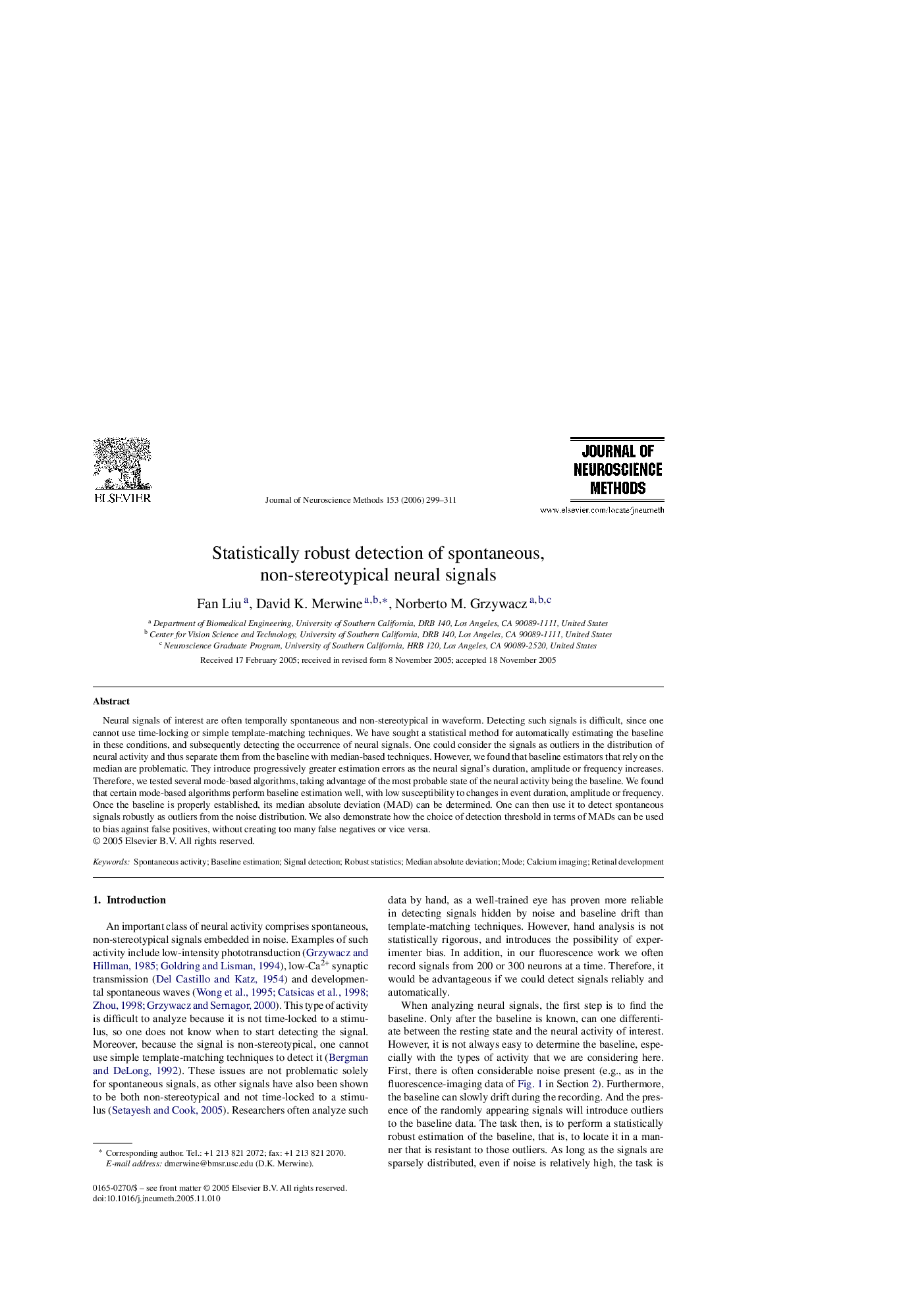| Article ID | Journal | Published Year | Pages | File Type |
|---|---|---|---|---|
| 4336923 | Journal of Neuroscience Methods | 2006 | 13 Pages |
Neural signals of interest are often temporally spontaneous and non-stereotypical in waveform. Detecting such signals is difficult, since one cannot use time-locking or simple template-matching techniques. We have sought a statistical method for automatically estimating the baseline in these conditions, and subsequently detecting the occurrence of neural signals. One could consider the signals as outliers in the distribution of neural activity and thus separate them from the baseline with median-based techniques. However, we found that baseline estimators that rely on the median are problematic. They introduce progressively greater estimation errors as the neural signal's duration, amplitude or frequency increases. Therefore, we tested several mode-based algorithms, taking advantage of the most probable state of the neural activity being the baseline. We found that certain mode-based algorithms perform baseline estimation well, with low susceptibility to changes in event duration, amplitude or frequency. Once the baseline is properly established, its median absolute deviation (MAD) can be determined. One can then use it to detect spontaneous signals robustly as outliers from the noise distribution. We also demonstrate how the choice of detection threshold in terms of MADs can be used to bias against false positives, without creating too many false negatives or vice versa.
